Whether you’re renovating or creating your café from scratch, buying new furniture for your venue can be an intimidating task. There are so many details to consider with your new furniture – with one of the most important being the cost.
The cost of café furniture differs a lot across the industry. There are multiple reasons that account for these differences – including style and quality. You may be confused by what is driving the costs up and down and that’s why you’re reading this blog now. This is a pricing guide for you to follow to find the furniture that best suits you.
Perhaps the most important pieces of furniture that exists in your café are your chairs. There are great differences in the pricing of café chairs, so here’s a few things to look out for when you’re purchasing your new chairs.
How much do Café Chairs Cost?
There are many options available when it comes to your choice in café chairs, from polypropylene to timber. Because of this, you can expect a wide range of pricing as well.
Arguably the most popular for cafes, polypropylene chairs would make up the base of the pricing ladder for café chairs. Ranging from $50 a chair to $250 a chair, polypropylene chairs are the least expensive and most common. The style and design of the chair will be the leading factor for different prices across the industry. Each chair requires a different mould, and therefore the more complex the design of the chair, and consequently the mould, the more the chair will cost.
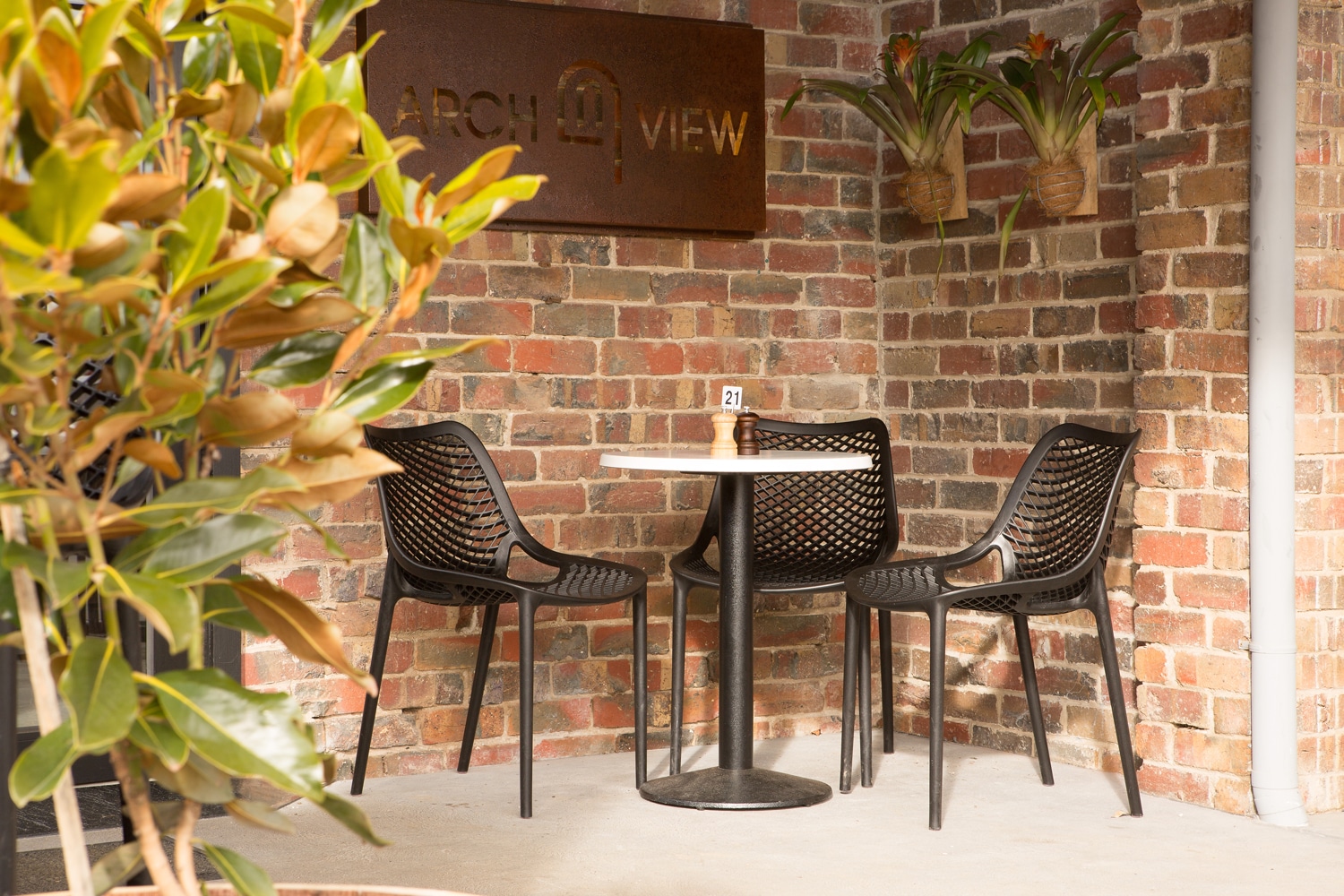
The same idea goes for metal chairs. Each added detail adds to the price. All extra features, such as chroming, galvanizing and powder coating all add to the price of the chair. On the same note, every new weld also adds not only to the strength of the chairs, but also to the cost. For this reason, the more detailed designs will cost more.
Choosing from the timber options will significantly increase the price you pay. The price range for timber chairs lies between $90 and $500 a chair. The range in the pricing of these chairs is due mainly to the timber that is used to create the chair. European Beechwood is the preferred hardwood used for chairs, as it is a much hardier timber. Rubberwood or Chinese Oak chairs will cost you a lot less, however they may not offer the same quality.
With all the chairs that are on offer, the origin of the chair always affects the cost of the chair. Across the world there are varying levels of quality control. Quality of materials as well as quality of craftsmanship greatly affect the cost of the chairs. There are many countries that manufacture chairs to a low standard with little regard paid to the quality of the product produced. These chairs tend to be more on the cheap side, however, as previously mentioned, they aren’t very good quality. Other countries, however, uphold a high standard of quality and therefore produce chairs that will cost a lot more, but also be of great commercial quality.
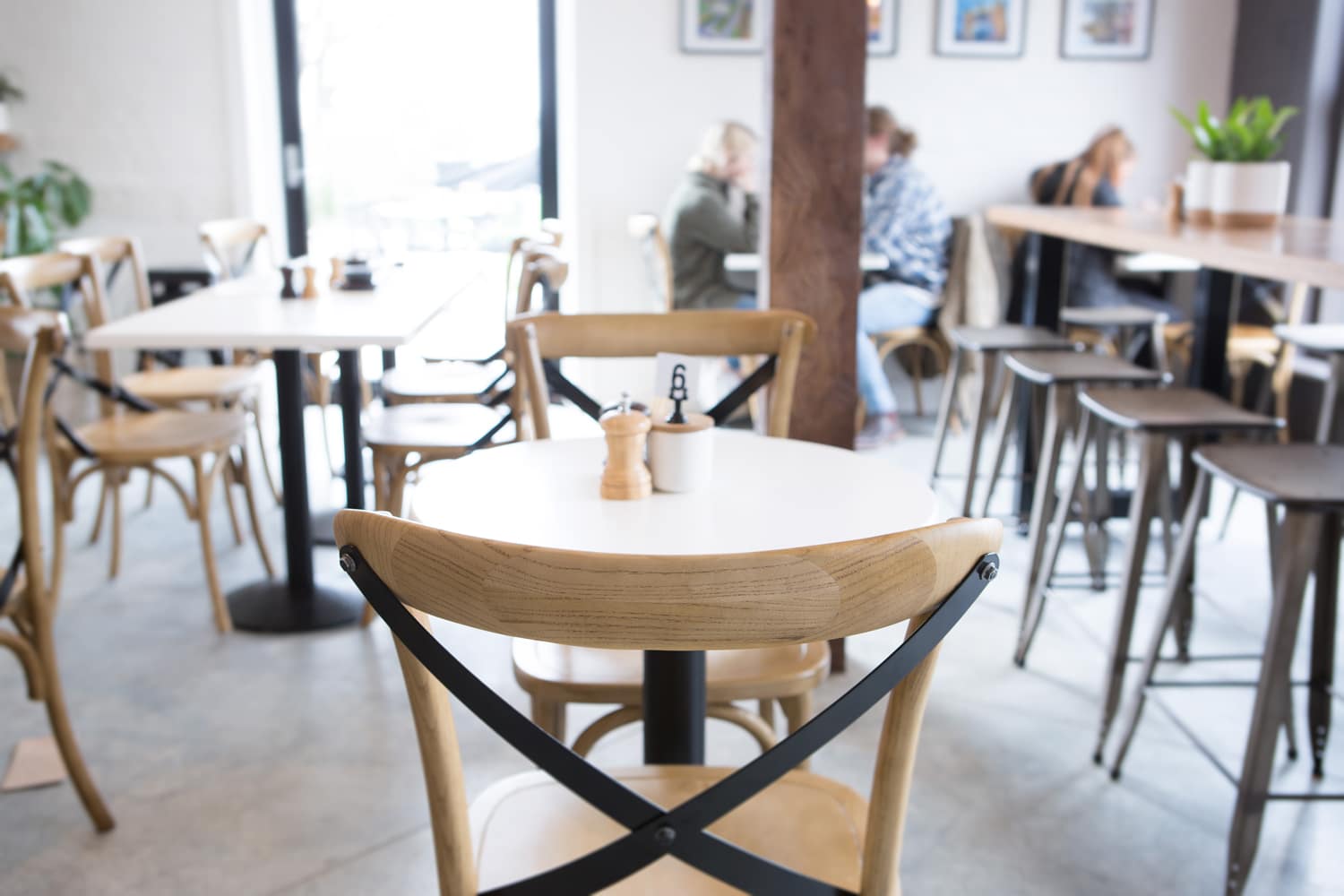
However, it’s not only materials and place of manufacture that will affect the price that you will pay. Across the industry there is a hierarchy of brands that cause a range in the chair costs. There are options ranging from the least expensive chairs that are created with little attention paid to the quality and don’t offer any brand guarantees. Then you have the middle range of chairs which offer great quality at a great price. Whilst these chairs mightn’t sport the best brand name, they do offer the guarantees of quality. The top range then offers up the most expensive chairs. These chairs are great quality; however you aren’t only paying for the quality of the chair, but the badge as well.
We understand it’s a hard decision to make, but this is where we leave it with you. Once you’ve made the tough decision about your chairs, you’ll be wanting to look at tables.
How much do Café Tables Cost?
There are many options when it comes to your café tables, that you may get a little overwhelmed. Primarily, café tables are created from your choice of table top matched with your choice of table base. We would always recommend when you choose your café tables, you make the choice based on quality.
Table tops and table bases differ in quality across the board due to a number of reasons, but most commonly, due to materials.
Table tops are made from varying materials which contribute to the cost. There are multiple options for your table tops, from timber to laminate and they cover a range of costs across the industry.
The most cost-effective table top available would be the resin versions. Here at Adāge Furniture, we call these Gentas Table Tops, but you may have heard of them referred to as SM France Table Tops or Isotops. Resin table tops are strong, and they tend to be the most popular among the café owners. These tops are created from a process that is simpler than their laminate counterparts and therefore they can offer more competitive pricing.
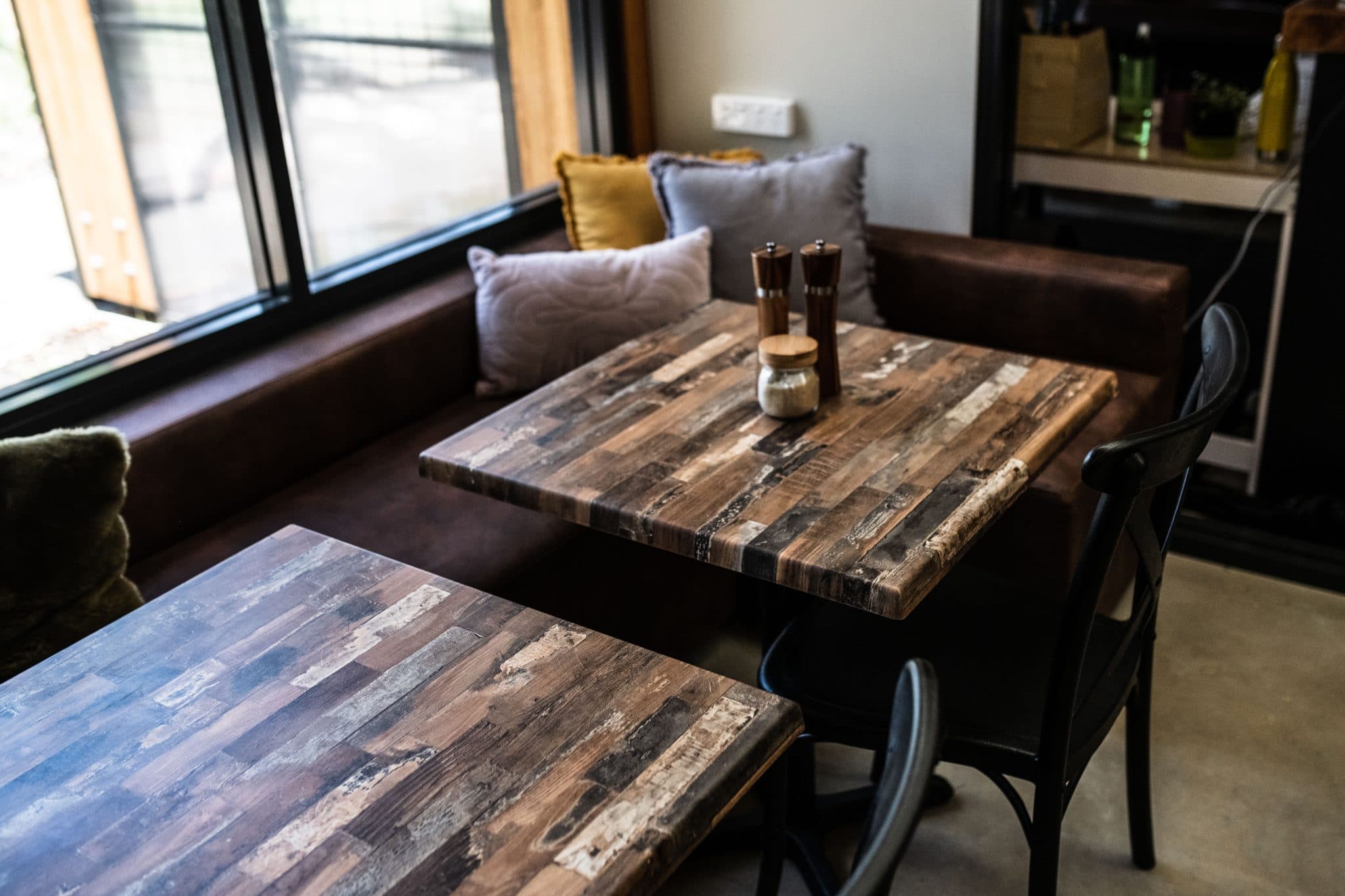
Laminate table tops can either be compact laminate or pre-laminated. Both these options are strong, however due to the process in creating the tops, they do tend to be more costly than the resin tops, but not as costly as a timber or marble option.
The highest of the price ladder for table tops would marble or slate. However, these table tops are rarely chosen for cafes due to the price tag they beg. A natural and beautiful table top option that doesn’t cost nearly as much would be solid timber. As these tops are created from a natural product and require more work to create, they tend to be on the higher end of the scale. However, the timber that is used also affects the price. Genuine Australian hardwoods, Indian Acacia timbers or Indonesian timbers will all ask a higher price than a softer Asian timber.
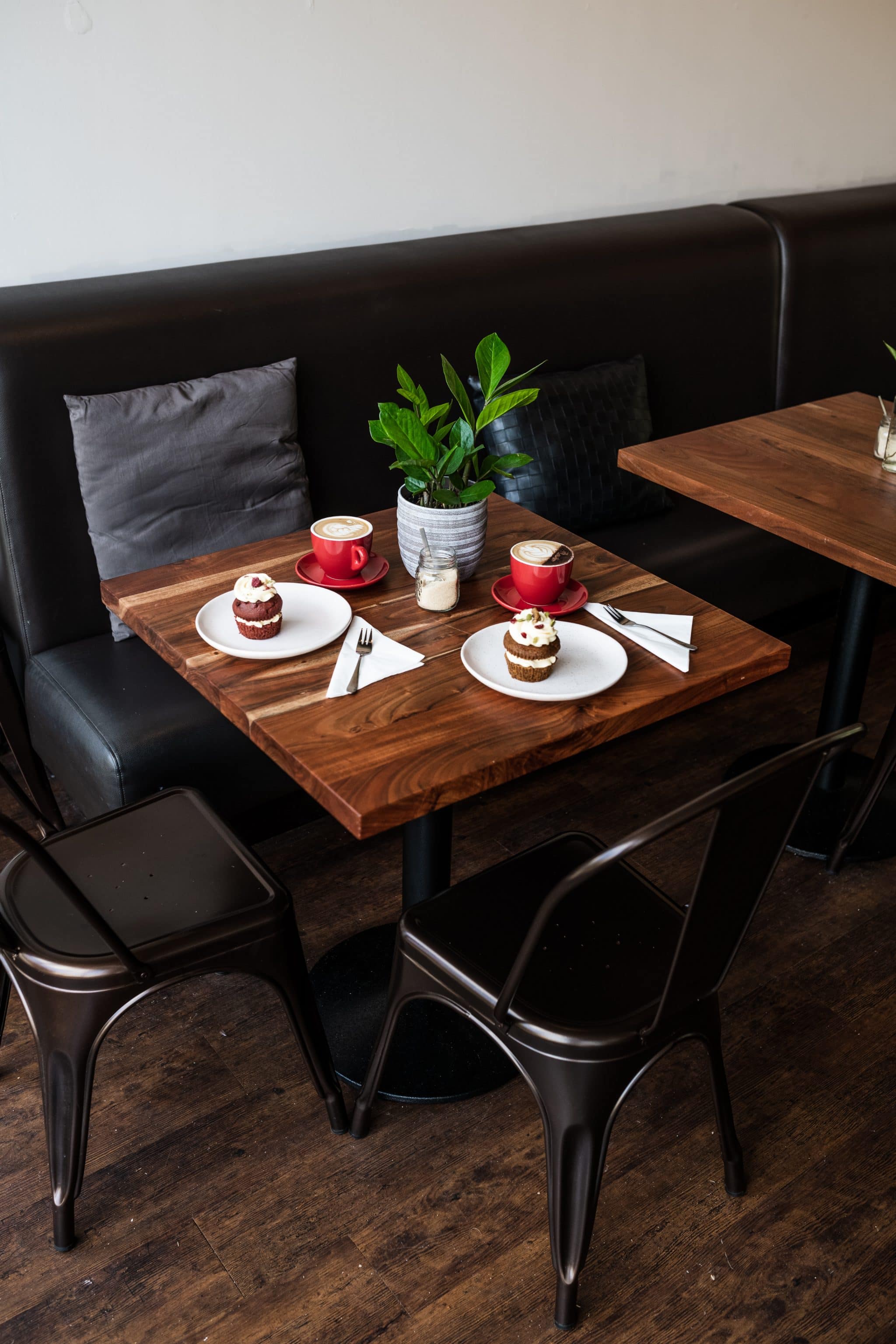
With all table top options, the thickness of the table top will also affect the price. Regardless of whether you are buying a laminate table top or a timber table top, the thicker the table top is, the more you can expect to pay for it.
On the same note, the size of the table top will also affect the cost. It is more cost effective to purchase lots of smaller tables than fewer big tables. This can work both for you and against you – it can be inconvenient depending on what you are wanting to achieve in your café, or it can provide for groups of all sizes.
After choosing your table top, you’ll be looking for your table base.
As with all furniture, table base prices depend largely on the material used to create the base, and the quality to which the base is made. The most inexpensive table base would be made from standard steel, followed by aluminium, then cast iron, and the top would be stainless steel.
Additional costs for all table bases would include the finish that is used – such as powder coating. Powder coating with outdoor properties is also going to cost more, however it does offer more protection against the elements.
Different mechanisms drive table base prices up also. For example, self-levelling capabilities will always bring an extra cost over against the manual adjustable feet options. Another example would be table bases that allow the top to be folded down for easy stacking away. These also cost more than the average table base that can’t be folded away.
We understand that cafes don’t only have chairs and tables in them, but they can also have booth seating.
What is the cost of Booth Seating?
When it comes to booth seating, the pricing depends on the intricacy of the seat. The more details, such as buttoning or stitching, that the booth has, the more you can expect to pay. Imported booth seating is always going to be a cheaper option to take, however these can’t be customised to fit in with your venue exactly as you want.
Custom booth seating that is locally manufactured will always cost more as the raw materials to create the booths are locally sourced and therefore more expensive. Not only are the raw materials more expensive, but the labour used to create the booth seating is also more expensive for local manufacturers. However, these booth seats are customised, so can be created to match in with your venue exactly as you need them to.
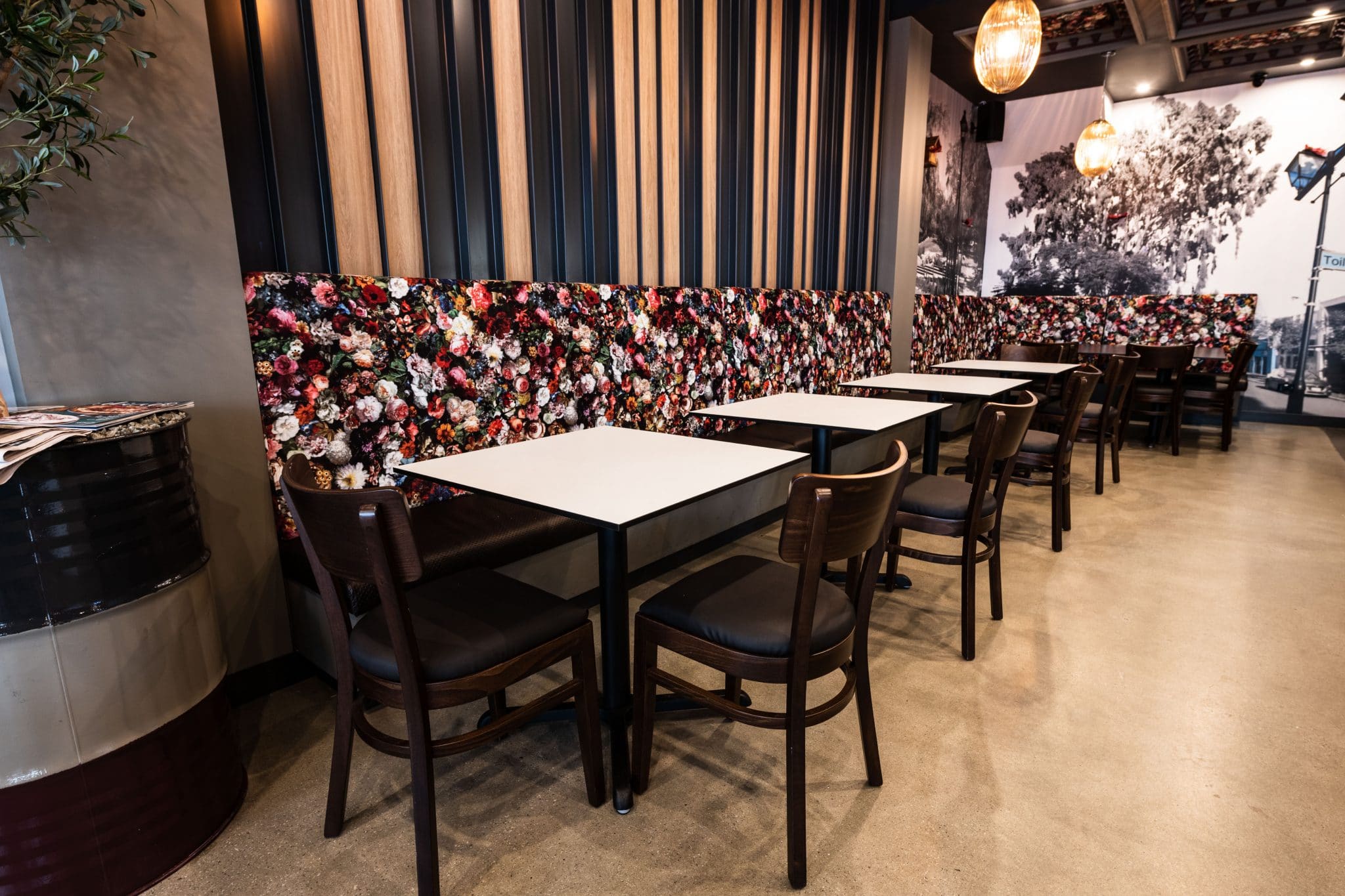
With all Cafe Furniture, you can be sure that the higher quality furniture will cost you more. This is mainly due to the higher quality raw materials used, and the quality control that is maintained in the factories. The furniture is crafted to last, while cheaper versions are created in mass quantities with little attention paid towards quality. As with anything in life, you can expect to get what you pay for.